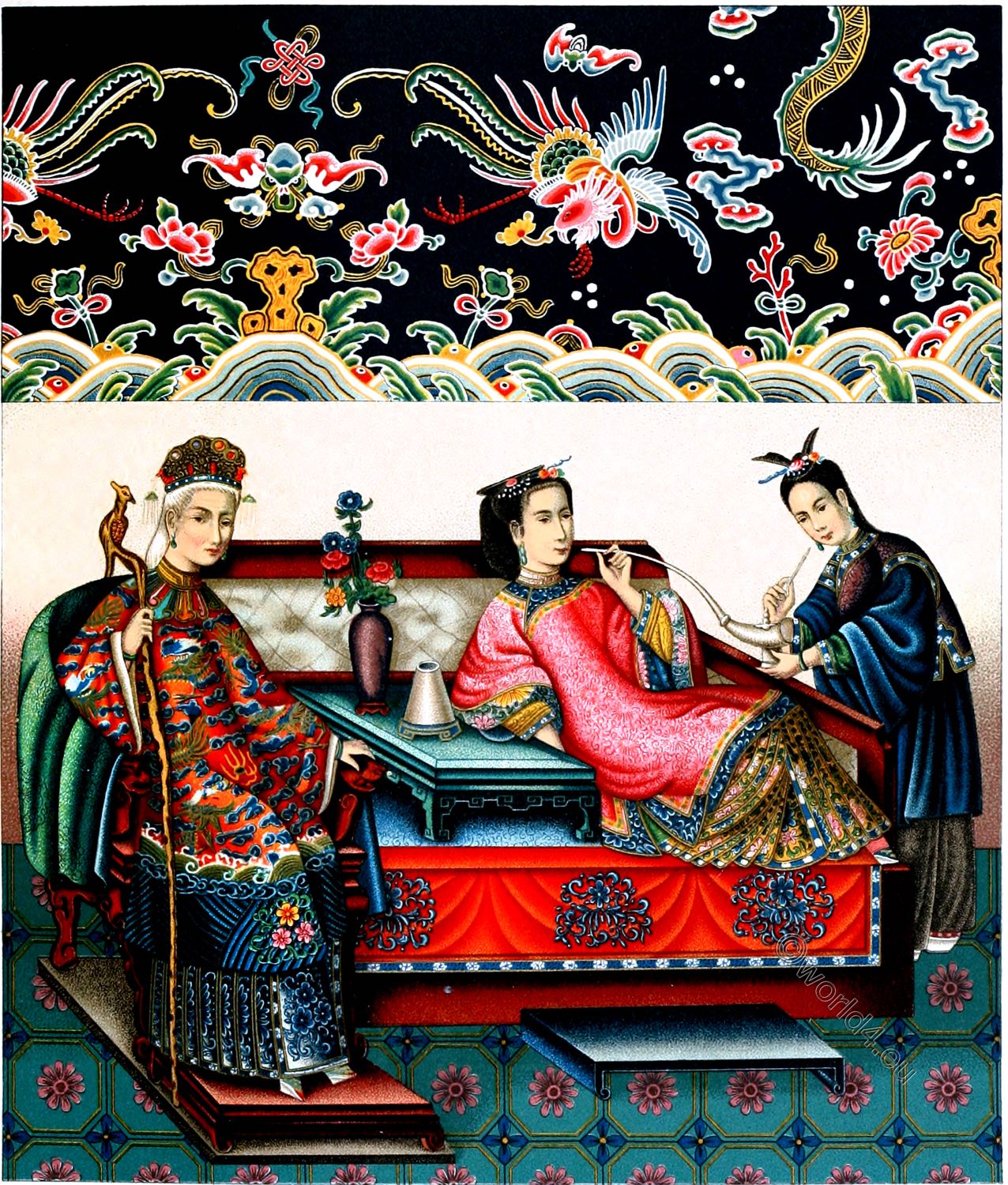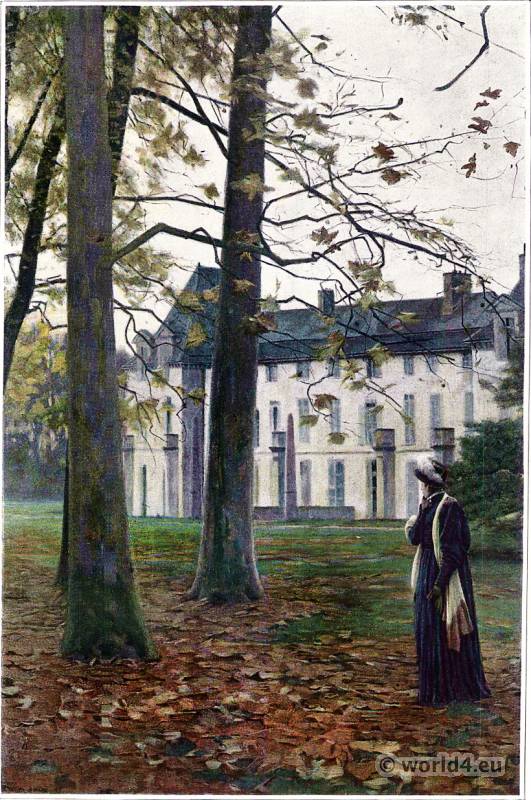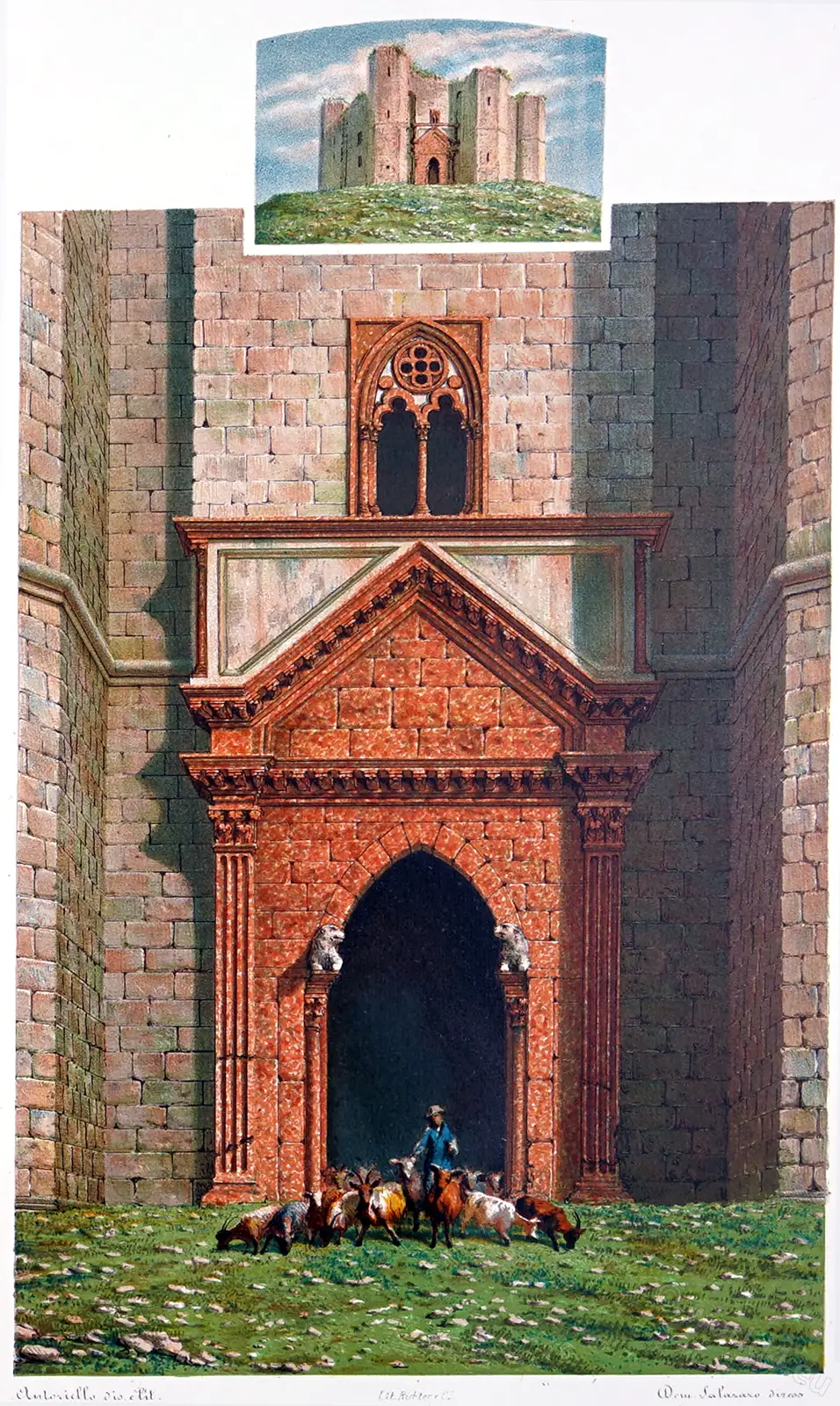History of Costume.
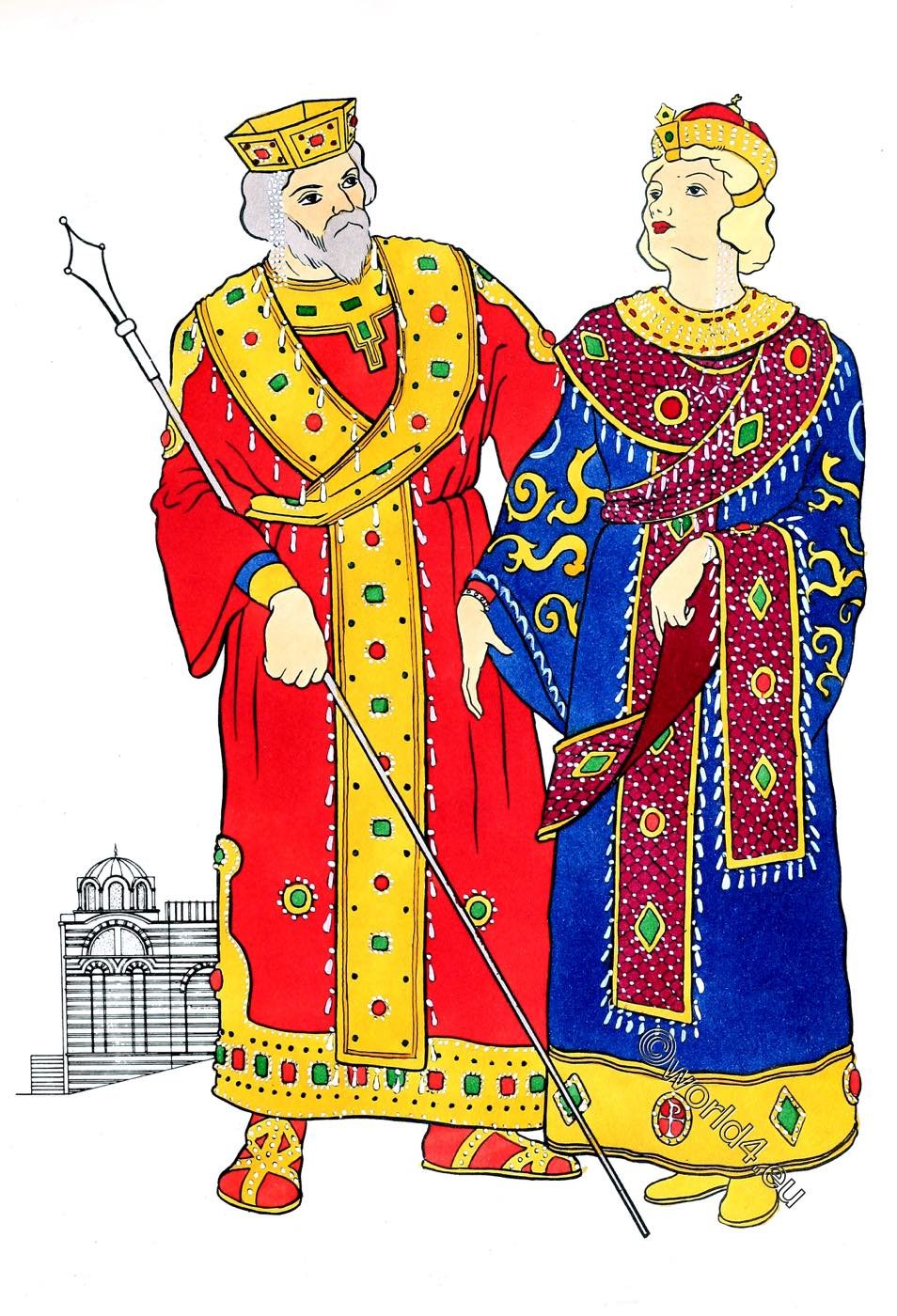
BYZANTINE – PLATE NO. 19
Byzantium. 400 – 1100 AD.
Except for a few details in ornament and headdress, the Emperor and his wife pictured here might well be, just as are the man and woman in Plate 18, of the western part of Europe. The man is wearing a long, tight-sleeved undertunic and over it a heavily bejeweled, ornamented overtunic or dalmatic.
It was cut on the pattern of a modern kimono, though it probably fastened down the back, or else was just pulled on over the head. His hair is “bobbed” and his beard clipped short and well trimmed. On his head he wears a gold crown that is encrusted with uncut precious stones and has three strands of pearls hanging from it on each side. Notice the extremely characteristic trimming at the neck and hem of his dalmatic. Draped around his shoulders is the pallium, a garment reserved only for nobility. Its development can be traced back directly to the imperial Roman toga. That toga became longer, narrower, and finally peculiarly shawl-like, when it was called the consular diptych. It was richly brocaded, and was stiff and formal. Later it became what we see here a long band about eight inches wide, very stiff, lined and heavily jeweled. It was draped in various ways or else just worn around the neck and allowed to hang down. In this form it was used by eastern and western European kings as a part of their state robes. It is still being worn by Orthodox and Roman Catholic priests. The Emperor’s sandals are made of fabric and richly ornamented with jeweled bands.
The only differences in the woman’s costume are the collar, the embroidered sleeves, the manner of draping the pallium, and the headdress.
Since the collar was one of the most important accessories of Byzantine costume, let us discuss it first. It remands one of the Egyptian collars, and like many may have been made of leather, though heavy textiles or even metals were used. It was always put on over everything else and was always, like all Byzantine garments, beautifully jeweled, embroidered, and decorated. The Empress has put her hair up much as the average Roman matron did, and she is wearing a turbaned crown made of metal and cloth, all richly colored and jeweled. Her pallium seems somewhat wider and longer than her husband’s and is, therefore, somewhat more elaborately draped. Her wide sleeves have been elaborately embroidered, although her shoes are comparatively unornamented. Notice that there are no heels on the shoes, or any definite shape to the toe. The toe usually followed the natural shape of the foot or else was slightly pointed.
Source: Museum Extension Project.
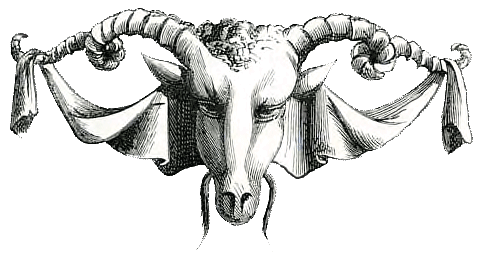
Related
Discover more from World4 Costume Culture History
Subscribe to get the latest posts sent to your email.




